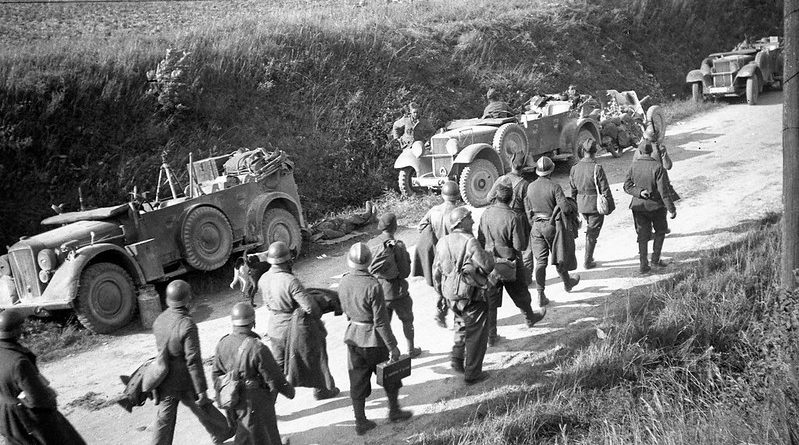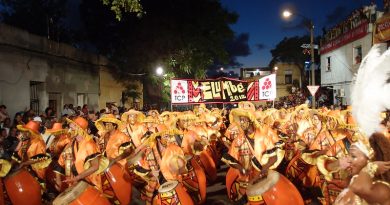Nazi Ratlines: Escape to South America
They were called “ Ratlines” — a system of escape routes for Nazis and other fascists fleeing Europe in the aftermath of World War 2.
These escape routes mainly led to havens in Latin America, particularly Argentina, Chile, Paraguay, Colombia, Brazil, Uruguay and Bolivia, as well as the United States and Switzerland.
It’s estimated more than 10,000 German military, including many suspected and war criminals, used these ratlines in the years after the war.
There were two primary routes: the first went from Germany to Spain, then Argentina; the second from Germany to Rome to Genoa, then South America. The two routes developed independently but eventually came together. The ratlines were organised by Nazi sympathisers and supported by clergy of the Catholic Church, and, some historians claim, even by the Vatican.
While unanimously considered to have committed suicide in Berlin, various conspiracy theories even claim Adolf Hitler survived the war and fled to Argentina.
After World War Two, thousands of Nazis and wartime collaborators from France, Croatia, Belgium and other parts of Europe were looking for a new home: preferably as far away from the Nuremberg trials as possible. Argentina welcomed hundreds if not thousands of them: the Juan Domingo Peron regime went to great lengths to get them there, sending agents to Europe to ease their passage, providing travel documents, and in many cases covering expenses.
During World War 2 Argentina clearly favored the Axis because of close cultural ties with Germany, Spain, and Italy. This is not surprising, as most Argentines were of Spanish, Italian, or German descent.
Nazi Germany nurtured this sympathy, promising important trade concessions after the war. Argentina was full of Nazi spies and Argentine officers and diplomats held important positions in the Axis Alliance. Perón’s government was a big fan of the fascist trappings of Nazi Germany: spiffy uniforms, parades, rallies, and vicious anti-Semitism.
Many influential Argentines, including wealthy businessmen and members of the government, were openly supportive of the Axis cause, none more so than Perón himself, who had served as an adjunct officer in Benito Mussolini’s Italian army in the late 1930s. However, Argentina remained neutral during the course of the war, until March 1945 where mounting pressures resulted in Argentina caving in and declaring war on the Axis powers only a month before the war ended.
Even after Germany was defeated, there were many powerful men in Europe who had favored the Nazi cause and continued to do so.
Spain, still ruled by the fascist Francisco Franco, had been a de facto member of the Axis alliance; many Nazis would find safe if temporary, haven there. Switzerland had remained neutral during the war, but many important leaders had been outspoken in their support of Germany. Most retained their positions after the war and were able to provide assistance. Swiss bankers, out of greed or sympathy, helped the former Nazis move and launder funds.
Some of the Nazis and war criminals who escaped using ratlines include:
- Andrija Artuković, escaped to the United States; arrested in 1984 after decades of delay and extradited to Yugoslavia, where he died in 1988 from natural causes
- Klaus Barbie, fled to Bolivia in 1951 with help from the United States, as he had been an agent of the U.S. Army Counterintelligence Corps since April 1947. Captured in 1983, he died in prison in France in 1991
- Alois Brunner, fled to Syria in 1954; died around 2010
- Herberts Cukurs, Latvian Nazi collaborator, fled to Brazil in 1945, assassinated by Mossad in Uruguay in 1965.
- Adolf Eichmann, fled to Argentina in 1950; captured 1960; executed in Israel on 1 June 1962
- Aribert Heim, disappeared in 1962; most likely died in Egypt in 1992
- Sándor Képíró, fled to Argentina, returned to Hungary in 1996. He stood trial for war crimes in Budapest in February 2011, before his death in September.
- Josef Mengele, fled to Argentina in 1949, then to other countries; died in Brazil in 1979
- Ante Pavelić, escaped to Argentina in 1948; died in Spain, in December 1959, of wounds sustained two years earlier in an assassination attempt
- Erich Priebke, fled to Argentina in 1949; arrested 1994; died in 2013
- Walter Rauff, escaped to Chile; never captured; died in 1984
- Eduard Roschmann, escaped to Argentina in 1948; fled to Paraguay to avoid extradition and died there in 1977
- Hans-Ulrich Rudel, fled to Argentina in 1948; started the “Kameradenwerk”, a relief organization for Nazi criminals that helped fugitives escape
- Dinko Sakic, fled to Argentina in 1947, arrested in 1998 and extradited to Croatia. He was tried and found guilty of war crimes and crimes against humanity, serving a 20 year sentence. He died in 2008.
- Franz Stangl, fled to Brazil in 1951; arrested in 1967 and extradited to West Germany; died in 1971 of heart failure
- Gustav Wagner, fled to Brazil in 1950; arrested 1978; committed suicide 1980.
Famous Jewish Nazi hunter and holocaust survivor, Simon Wiesenthal was instrumental in publicising the Ratlines helled pursue and arrest Nazis such as Adolf Eichmann. The Simon Weisenthal Centre in Los Angeles, which was founded by supporters of his work, engaged with the campaign to remove the statute of limitations on Nazi crimes and assisted in the hunt for Nazi war criminals. Today, the centre is home to the largest Holocaust museum in the United States, and it’s modern day focus is on education (having produced two Academy Award winning documentaries) and the fight against antisemitism.
More information:
Read: Barlioche: an unsuspecting past
Study Guide: The Nazis & The Holocaust
Main Image: Adolf Eichmann on Trial, The Huntington, Flickr Creative Commons
By Ian Cross & Sofi Summers




